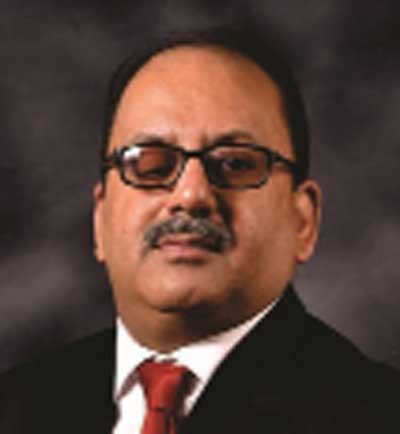Consider a country that has less area than that of Karachi, consider a country that has no natural resources buried beneath its soil and tapes drinking water either from Pacific ocean or rain after arduous process, it is Singapore, which relying on its youth has touched the epitome of success.
Similarly, Switzerland provides an exemplary model for utilitizing the potential of its youth efficiently. It is considered as a global leader and a benchmark in terms of providing and ensuring vocational education and training (VET), characterised by its on-the-job training and close collaboration between vocational training institutions and industry. This “gold standard” VET system has not only equipped individuals with practical skills but has also created a seamless transition from education to employment.
Moreover, Germany has adopted two tracks of education in order to utilize the potential of its youth for the betterment of the country. After completing high school, depending on a student’s abilities and aptitude, they are either encouraged towards university or towards vocational education.
Unlike these nations, Pakistan being bestowed with sixty percent 60% of young population, has been striving very hard to realize the dream of a successful nation.
Elsewhere the youths of any nation are a great asset to its future. As they represent new blood pumping into the body of a community, keeping it alive and moving forward with hope. On the contrary, the youth of Pakistan seem least prepare to shoulder the burden of the future and regarded as a ticking ‘time bombs’.
Furthermore, the reports suggest that Pakistan is the 46th youngest country with a median age of 20.4 years among 237 countries and territories in the world, according to UN Population Division statistics released this year. Among nine (if Iran is included) South Asian countries, Pakistan is the second youngest, ranked only after Afghanistan. Around 63 per cent of Pakistan’s population (aged 15-35) is reported to comprise of youth (UN Population Fund Report, 2017).
The question looms and lurks large weather growing youth is a good omen, or a challenging situation for Pakistan. The overall despondency that characterises our country afflicts the younger generation perhaps more deeply because it is not able to see a secure future, leading to brain drain and flight of skilled labour. The process may not necessarily be good for the country as its best assets are lost; yet, the flip side is that they tend to support their larger ‘back home’ families with their remittances and in many other ways.
According to the 2017 population census, 64 per cent of the country’s population was under 30 years and more than 60 million or 29pc of the total population belonged to the 15-to-29-years segment categorised as youth. According to Election Commission figures for registered voters released in November 2021, the largest of the six age cohorts is that of registered voters from 18 to 29 years; it contains 35.57m or 29.4pc of total registered voters.
Despite this extraordinarily high number of young voters who have the ability to swing the election outcome in any direction, political parties in Pakistan have played very little role in recognising their importance and bringing youth to the polling stations. Gallup Pakistan exit polls indicate that the average turnout of young voters in Pakistan in the past eight elections was about 31pc which is a whopping 13 percentage points behind the 44pc average turnout of voters of all ages.
Adding insult to the injury, the recent survey, the most “stressed out” population in Pakistan are its millennials – those falling between the ages of 18 and 33 years old. This is a flaming red flag: Pakistan is the fifth largest ‘young country’ in the world. A recent United Nations Population Fund report makes the claim that out of 200 million people, 63 percent of Pakistan’s population comprises of youth. Of these, 58.5 million are 20-to-24-year olds while 69 million are aged under 15. Stress can be fatal, and if the majority of youth is being pushed into stress, surely there is something wrong in the way that society is bringing up its youth.
The UNESCO Institute for Statistics estimated in 2016 that around 25 percent of the Pakistani youth is illiterate whereas 8.2 percent is unemployed with no vocational and technical skills. Access to education remains low in the country with completion rate for primary education among the lowest in the world. Even then, the state spends only 2.2 percent of its budget on education as compared to the 3.6 percent fiscal spending on defence.
It is evidently supported by the statistics that rank Pakistan 147 out of 188 countries in the Human Development Index, lower than many developing countries in South Asia. In terms of employment, The Pakistan Economic Survey (PES), 2015-16 estimates that the total labour force increased from 59.7 million in 2012-13 to 61 million in 2014-15. This is around the time that reverse migration of educated Pakistanis started becoming visible. Meanwhile, the total number of employed people increased from 56.0 million to 57.4 million in this period, signifying the induction of 1.4 million citizens into the productive workforce.
These manifestations have emerged mainly due to multi-faceted factors; which are hampering the progress of the country, but burgeoning unproductive youth pivots among all. Lack of vocational and technical trainings coupled with growing ignorance and increasing rate of illiteracy, proliferating rate of unemployment and absence of political literacy paint a stark and dismal picture of Pakistani youth. Moreover, it is saddening to note that Pakistan has the 9th largest labour force in the world, which is increasing every year.
According to the Labour Force Survey 2017-18, the unemployment rate for the year 2020-21 has been estimated at 9.56 per cent. The saddest part is that the unemployment rate among degree holders is three times higher than the overall unemployed people.
Additionally, they disobey civil and criminal laws, appreciate dogmatic cultural norms, promote political instability, support populist tendencies and fuel the threat of terrorism and extremism. Some questions are rising the eyebrows that do the above examples not hold water that youth bulge in Pakistan is a liability. Does the country have prowess to inculcate youth with vocational trainings in order to make them cultivated citizens? Does the growing youth bulge not burden the already ailing economy and strained resources? As it is delved deeper into the culture and traditions of Pakistan, the answer to these questions becomes highly critical.
If the increase in the number of working age individuals can be fully employed in productive activities, other things being equal, the level of average income per capita should increase as a result. And youth bulge will become a fruitful for Pakistan. However, if a large portion of young people cannot find employment and earn satisfactory income, the youth bulge will become a demographic bomb, because a large mass of frustrated youth is likely to become a potential source of social and political instability.
To prevent such disenchantment, the Higher Education Commission (HEC) of Pakistan has begun emphasising academia-industry linkages, encouraging projects revolving around real-life issues and field exposure and internships for the faculty to bridge the distance between the existing education system and industry. However, it seems a million miles away in Pakistan.
To sum up the debate, nevertheless, every cloud has a silver lining. Therefore, it is high time Pakistan needed to visit afresh the issue of growing youth bulge. For that matter, creating business-oriented avenues for youth, implementing fair policies to reduce unemployment, increasing political participation among youth and ensuring ethical and moral training can open the window of prosperity for the country.
By providing young people with competitive skills for self-employment or construction jobs, vocational training can become an appealing choice for the youth while addressing the job market’s skill shortage as well. Along with this, the problems like economic challenge characterised by soaring inflation, mass emigration, and a burgeoning youth population can also be converted into opportunities for growth and development, if managed effectively. A “skills-first” approach through vocational education and training, as exemplified by Switzerland, holds the key to harnessing the potential of our young population.
Ultimately, it can secure Pakistan’s economic stability and prosperity, ensuring that Pakistan’s can become a catalyst and harbinger of progress and prosperity.
Youth bulge in Pakistan: An asset or liability




